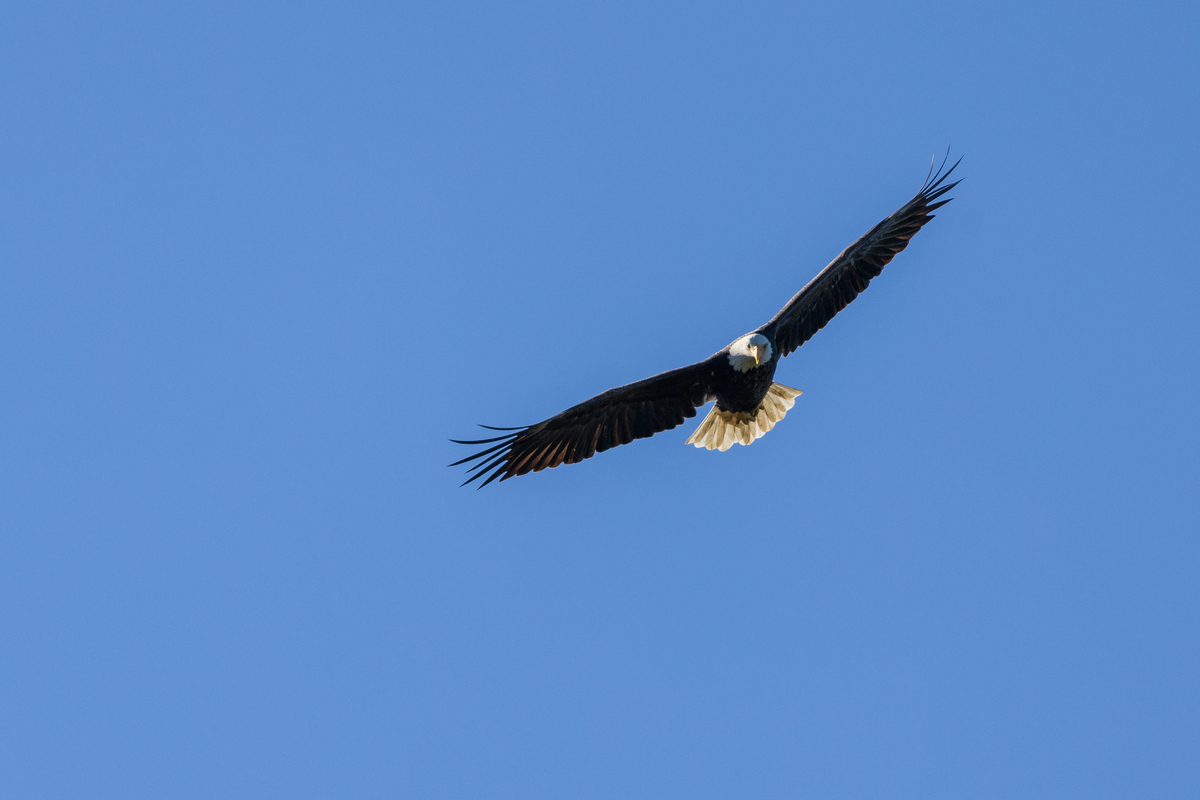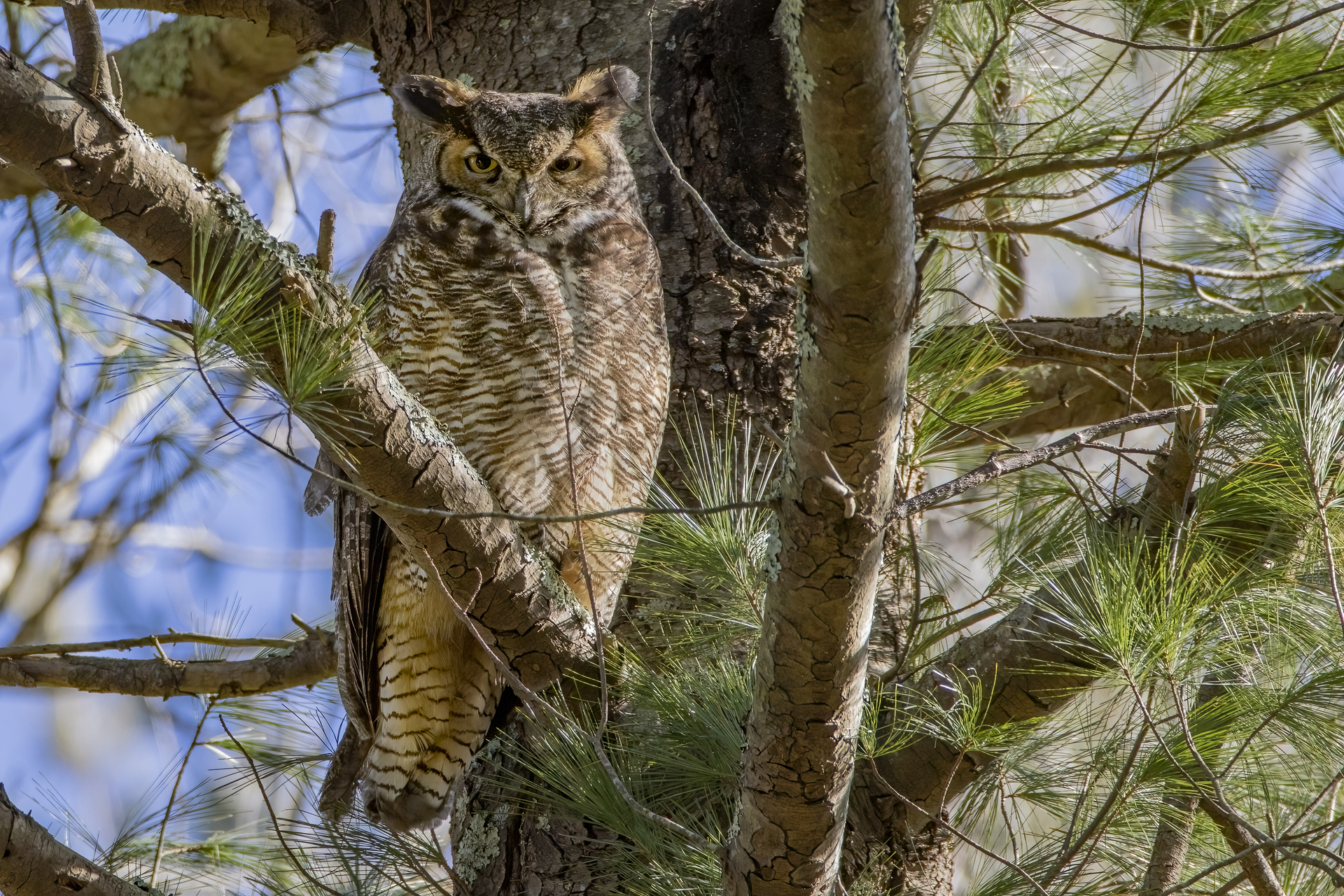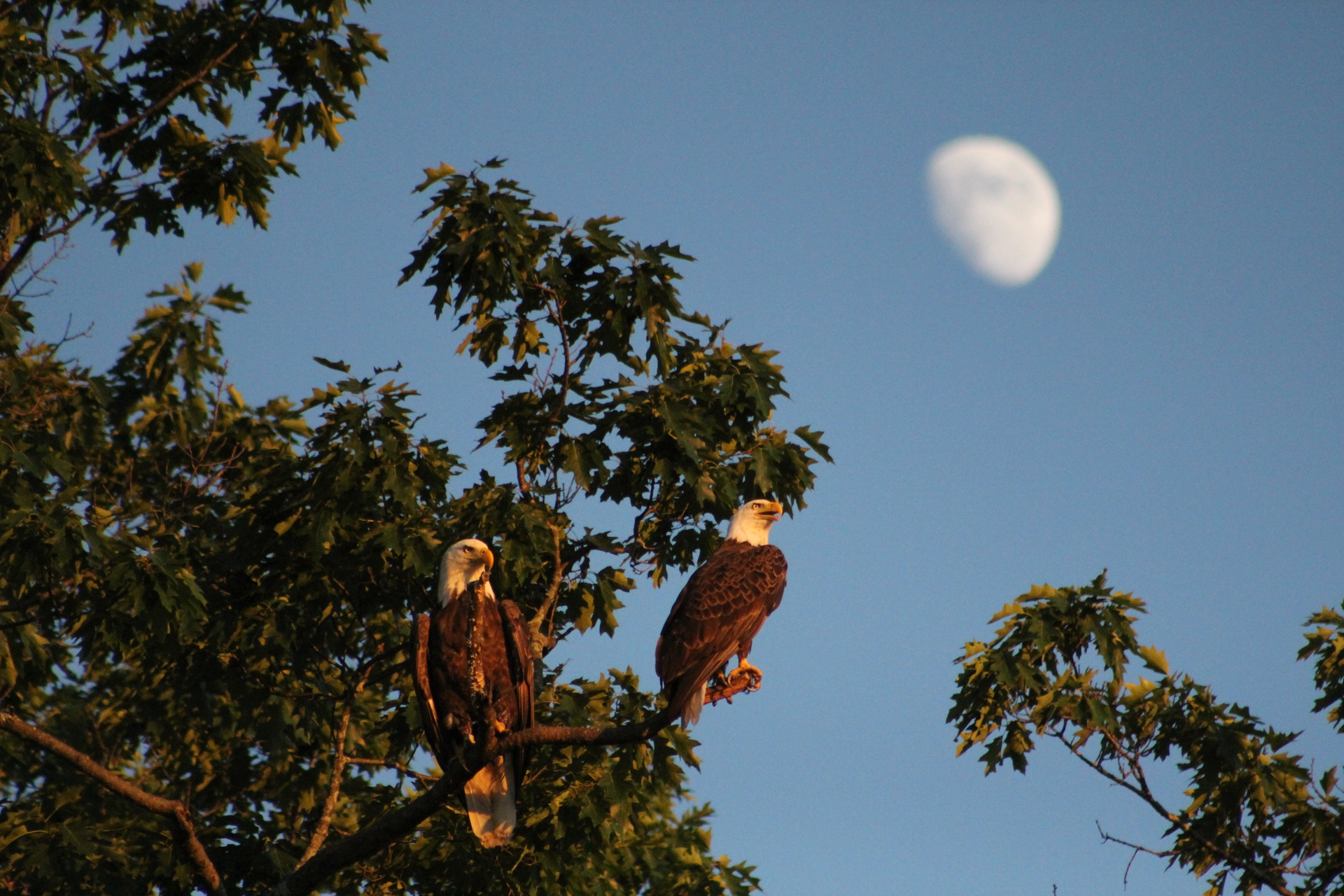When MK and KZ took up residence on a tree overlooking the Mystic Lakes in 2021, they were the first breeding pair of Bald Eagles to nest in Arlington in more than 50 years. They became local celebrities, and fans gleefully watched as they flew around the Greater Boston area.
Then, in February 2023, a few of MK’s fans found her struggling on the ground, visibly hurt and bleeding out of her eyes, at Mt. Pleasant Cemetery in Arlington. A team of wildlife experts brought her to the New England Wildlife Center, where veterinarians spent a week trying to nurse her back to health. But it wasn’t enough. On February 28, 2023, MK passed away.
MK’s death fits a disturbing trend of raptor mortality in Arlington and beyond. In 2018, a female Great Horned Owl and one of her owlets were found dead, followed by the death of one of MK’s first two fledglings in 2021. In the necropsies that followed each death, all the victims had one thing in common: They had significant levels of second-generation anticoagulant rodenticides (SGARs) in their blood.
What are SGARs?
SGARs kill rodents by preventing their blood from clotting, causing them to die from blood loss over the course of several days. As they bleed, rodents become increasingly easy prey for raptors, other predators, and even household pets. When a predator eats a rodent that has ingested an SGAR, it develops the same symptoms of excessive bleeding, which often leads to serious illness or death.
Federal regulators have understood these dangers for years, leading to a ban on the retail sale of SGARs in 2015. But SGARs are still legal for pest control professionals and exterminators in Massachusetts, and remain in widespread use.
While the overall impacts of SGARs on wildlife are hard to measure, it is becoming increasingly evident that SGARs are causing a crisis for raptors and other predators such as foxes and coyotes. According to Zak Mertz, executive director of the Birdsey Cape Wildlife Center, “close to 100% of hawks tested in Massachusetts have some level of exposure to SGARs.”
Local Action
When Arlington-based author Laura Kiesel observed the impacts of SGARs on local wildlife, she knew she had to act. Kiesel built a broad movement of Arlington residents dedicated to reducing the use of these dangerous poisons in their town. These wildlife advocates now call themselves Save Arlington Wildlife, and their efforts culminated in the Arlington Town Meeting adopting a bylaw that bans the use of SGARs on town-owned land and buildings, directs the town manager to use integrated pest management, and is petitioning the state to allow the town to regulate SGARs on private land.
While this bylaw is a major step in the right direction, it won’t be enough to stem the epidemic of SGAR poisoning. “Raptors don’t respect municipal boundaries,” Kiesel said. To keep raptors in Arlington safe, we need to reduce the use of SGARs statewide.
Rescuing Raptors
To broaden the reach of the Save Arlington Wildlife movement, Mass Audubon has launched a campaign to organize groups in cities and towns across the Commonwealth to advocate for the reduction of SGAR use. To succeed, we'll need the support of committed wildlife advocates across Massachusetts.
Stay Connected with Policy and Advocacy
Learn about opportunities to advocate for our transformative policy agenda





